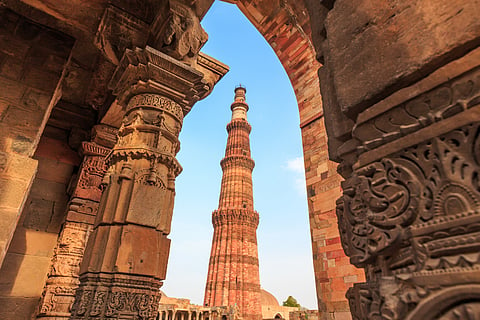
- Destinations
- Experiences
- Stay
- What's new
- Editor’s Picks
- Responsible Tourism
- CampaignsCampaigns
- Subscribe

Heritage tourism, in today’s global context, is a vital thread in the rich tapestry of travel experiences. It allows us to connect with our roots, understand our shared history, and appreciate the diverse cultural narratives that have shaped our world.
To boost heritage tourism, the Archaeological Survey of India (ASI) is set to launch a unique initiative called the "Adopt a Heritage 2.0" programme on September 4 at the Samvet Auditorium, IGNCA, in New Delhi. This initiative aims to preserve India’s diverse cultural heritage by inviting corporate stakeholders to improve the facilities of over 3,600 monuments nationwide. As a programme, it is an updated version of the earlier scheme launched in 2017.
As per the Ministry of Culture, “The selected stakeholders will develop, provide and/or maintain amenities in hygiene, accessibility, safety and knowledge categories. In doing so, they will get an opportunity to be recognized as a responsible and heritage-friendly entity. The term of the appointment will be for a period of five years initially, which may be further extended up to five years.”
Additionally, in an effort to engage stakeholders and increase public interest, a new mobile application called “Indian Heritage” will be introduced. This app will showcase information and images of heritage sites in India. It will also offer details about geo-tagged locations, public facilities, and a platform for citizens to provide feedback.
The stakeholders’ selection process involves consultations with different parties, thorough due diligence, and evaluations of economic and developmental opportunities at each monument. Those chosen will be responsible for developing, offering, and maintaining amenities such as hygiene, accessibility, safety, and knowledge. Their participation will earn them recognition as responsible and heritage-friendly entities. The initial appointment term lasts five years, with a possibility of extension.
Exploring our heritage through tourism allows us to connect with our ancestors and gain insight into shared histories that have shaped our world. In this regard, Delhi holds great significance in heritage tourism. It is home to many important heritage sites since, as a city, it is steeped in history and culture.
Qutub Minar
Standing tall at a towering 73 meters, the Qutub Minar is the world’s tallest brick minaret. Built in the early 13th century by Qutb-ud-din Aibak, the first ruler of the Delhi Sultanate, this UNESCO World Heritage site is a masterpiece of Indo-Islamic architecture.
Humayun’s Tomb
Humayun’s Tomb is often considered the precursor to the Taj Mahal due to its magnificent Mughal architecture. Constructed in the mid-16th century, his widow, Bega Begum, built this tomb in memory of Emperor Humayun. It is a prime example of a Persian-style garden tomb and is a UNESCO World Heritage site.
Red Fort (Lal Qila)
The Red Fort’s imposing red sandstone structure symbolises India’s struggle for independence. Built by Emperor Shah Jahan in the 17th century, the Red Fort served as the main residence of the Mughal emperors. Its majestic architecture and historical importance make it a UNESCO World Heritage site.
Jama Masjid
Jama Masjid is one of the largest mosques in India and can accommodate around 25,000 worshippers at a time. Also commissioned by Shah Jahan, the mosque was completed in 1656. It is a testament to the Mughal era’s architectural brilliance and is a serene place of worship.
Purana Qila (Old Fort)
The Old Fort boasts a mix of different architectural styles, including Hindu and Mughal, and is believed to be one of the oldest forts in Delhi. While its exact origins are uncertain, it is believed to date back to the Mahabharata era. Sher Shah Suri, a 16th-century ruler, later rebuilt it, and it eventually came under Mughal control.
